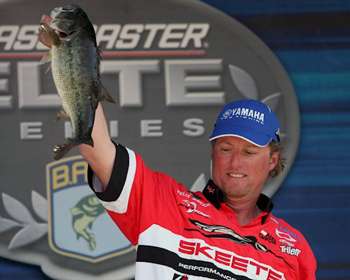
Straight out of the package, most crankbaits are serviceable. But serviceable doesn't cut it on the Elite Series trail. Accordingly, before he'll ever fish a crankbait in competition, Texas pro Kelly Jordon takes certain steps to make sure that all of his diving plugs are perfectly tuned.
"You've got to think of a crankbait as a machine," he says. "It usually has to be tuned a little bit to run right." Jordon has some simple steps that he takes before a bait goes into his tournament arsenal.
"The first thing that I'll do when I take a crankbait out of the box is inspect all of the split rings and make sure they're high quality and not bent out," he explains. "Sometimes you get a crankbait from the factory and one of the split rings is not right."
While split rings might be an afterthought to most casual anglers, Jordon says they can be the source of many problems.
"Generally, with a deep diving crankbait you're not using very heavy line — most of the time just 10- or 12-pound test," he explains. "That line can get into the split ring and it will cut your line or ruin your cast. It doesn't take long to visually inspect the split rings."
He prefers the oval-shaped Lucky Rings that come standard with Lucky Craft crankbaits. "The oval split ring naturally pulls your line to one end of the split ring and prevents the knot or eye of the bait from contacting the split," he says.
But if you prefer the traditional round split rings, or don't want to invest in the oval variety, it pays to be careful with them.
"You don't ever want your knot to be in the split of the ring where it can go in between and get cut," he says. "Check that periodically. Not only will you be assured that your line won't slide in the gap of the split ring but you'll also ensure that your bait is always contacting the double part of the split ring so it will run correctly."
Jordon also won't bring a crankbait with subpar hooks into his boat. "You definitely want to replace your hooks if they're not top-quality and supersharp," he explains. Typically, Jordon will replace stock trebles with hooks that are a size larger.
"The other thing I always do is take a pair of side cutters and clean all of the paint from around the eye that the hooks are hung on," he says. "Often, paint will fill up the eyes and restrict the motion of the hook.
Once the functional aesthetics are taken care of, Jordon focuses on the action of the crankbait. "I like to make several short casts to make sure the bait is tuned properly," Jordon states. "Some of them run great right out of the package but a lot of them need a little work. If you have a swimming pool or a dock, you can tune your baits the day before you go fishing."





